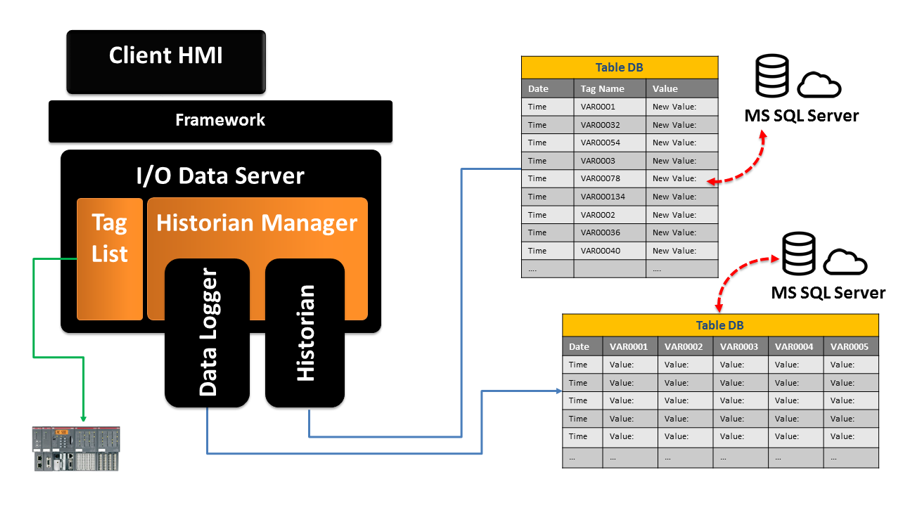
Movicon.NExT Help on Line - Tutorial
The I/O Data Server's Historian module records tags managed by the I/O Data Server and defined in the Address Space, using two different recording models:
Historians
Data Loggers
Both recording models record tag values on Database archives, but use different models and criteria for recording data.

The Historian records data associated to Historian prototypes according to a model which provides DB tables containing records for each even recorded, in one column.
This means that tables will have one column only independently from the amount of tags associated, whereby each record represents the changed value recorded only. The DB is very useful being efficient and ideal for analysing and displaying data in the viewer objects such as the Trends or Data Analysis. The Data Logger model is more suitable for the Report management.
The Data Logger records data associated to the Data Logger protypes according to the a model that provides data tables on DB, with records for each event recorded shown in one column for each tag associated.
This means that one table will be obtained with the same number of columns as tags associated, with the recordings of values of all the tags (also those that do not change) for each record. This occupies more DB memory and therefore less efficient, but data can be organized better to structure the those archives typically used by the Reports.
|
|
In the data recording model, it is therefore essential that the programmer evaluates the best method to use according to the type of analysis needed in order to reach their objectives with optimum results. The basic concept would be:
|